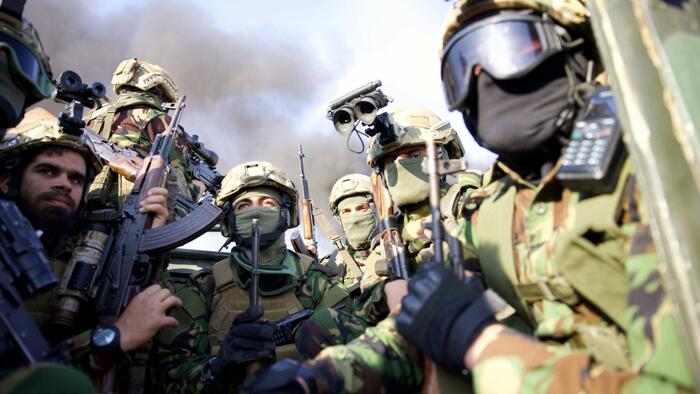The ongoing Syrian proxy war, while having quieted down in recent months, has erupted again as Hayat Tahrir al-Sham (HTS) has launched significant military offensives from Idlib Province. HTS forces have pushed eastward into western Aleppo Province, capturing several key towns and risking renewed conflict throughout the region. Reports indicate that intense fighting has led to the deaths of around 182 individuals in a single day, encompassing 102 HTS fighters and 80 Syrian forces and their allies. The escalating clashes have raised alarms about the instability in the area, highlighting that while some factions were previously confined to defined territories, they appear poised to reignite broader hostilities.
The renewed military action is underpinned by substantial support from Russian air forces, enhancing the capabilities of the Syrian military against HTS advances. Simultaneously, HTS is reported to have adopted Ukrainian drones in their offensive, representing a notable development in their combat strategy. The purported exchange between Ukraine and HTS – trading drones for fighters – suggests an evolving relationship that could impact the dynamics of the conflict. This aerial assistance marks a significant milestone for HTS, which had not previously incorporated sophisticated drone technology into their operations.
Amidst the fighting on the ground, airstrikes conducted by Syrian and Russian forces have led to considerable civilian casualties, further complicating the humanitarian crisis in the region. Reports detail that civilian areas in towns like al-Atareb and Darat Izza have come under fire, resulting in the deaths of at least 19 civilians and injuries to many others. With aerial bombardments striking close to Aleppo, Syria’s largest city, the war continues to pose a dire threat to those living in proximity to the escalating conflict. These developments underscore the urgency of stabilizing the situation and the growing toll that civilians suffer amid the military engagements.
HTS itself is a complex conglomeration of various Islamist militant groups, having formed in early 2017 from factions that were primarily focused on combating Jabhat al-Nusra, a group that has ties to al-Qaeda. While HTS has endeavored to present a more moderate image, attempting to distance itself from both al-Qaeda and ISIS, its ideological underpinnings remain closely aligned with militant Islamist rhetoric. Under the leadership of Abu Mohammad al-Julani, HTS has attempted to cultivate a more palatable identity for its governance in areas it controls, portraying itself through the guise of a civilian administration known as the Syrian Salvation Government.
The strategic aim behind HTS’s rebranding likely involves hoping to establish itself as a preferable partner for Western stakeholders, particularly in light of the shifting dynamics of the Syrian conflict. The West has previously engaged with various Sunni Islamist groups during the Syrian War, indicating a willingness to support factions that align with its interests. The ties between HTS and the Ukrainian government add another layer of complexity, reflecting a convergence of interests that could empower HTS amidst its ongoing territorial confrontations and broader regional tensions.
As HTS expands its military activities beyond Idlib, the repercussions threaten to destabilize not just the immediate vicinity of Aleppo but potentially reignite larger-scale conflicts akin to those seen earlier in the Syrian civil war. The strategic movements of HTS and the resulting military responses from the Syrian government and its allies could lead to entrenched hostilities once again. The situation calls for careful monitoring, as what was perceived as a localized issue may very well spiral into renewed turmoil, continuing to displace civilians and mitigate any approached pathways to peace in the war-torn region.

